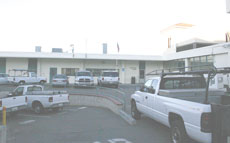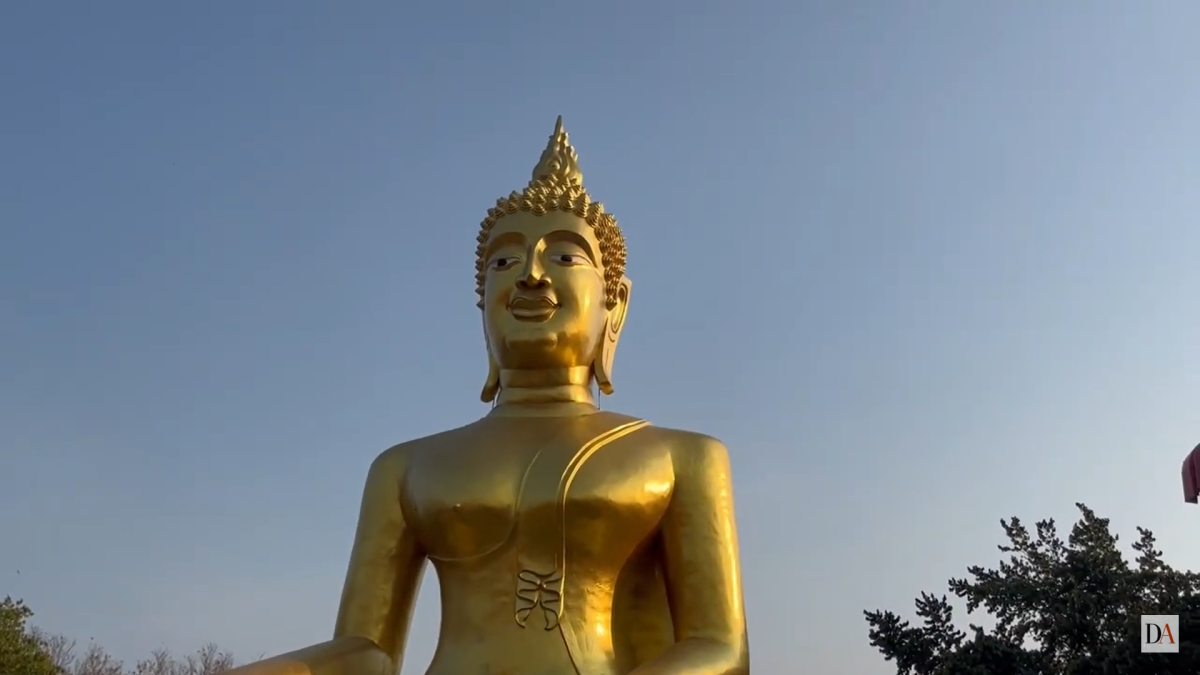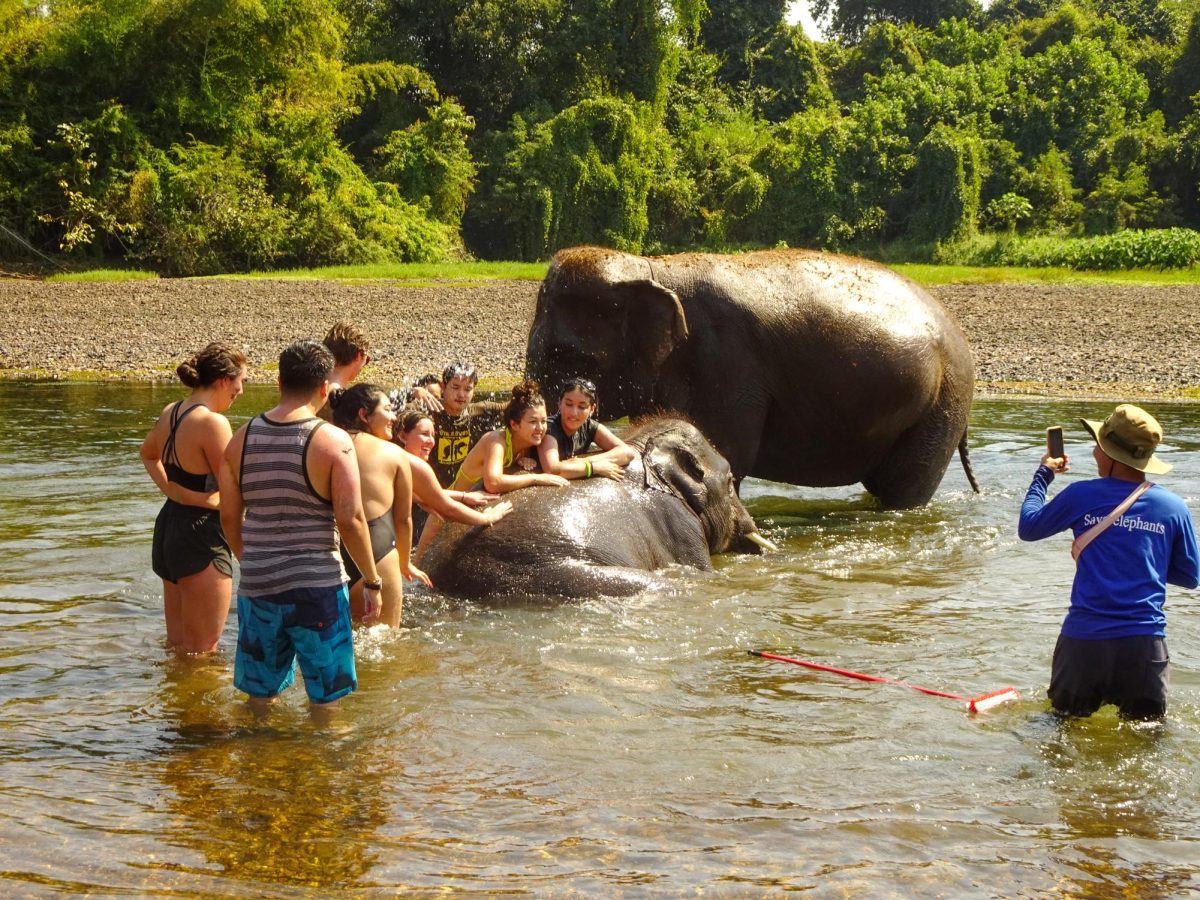 Fernando Donado, Staff Photographer
Fernando Donado, Staff PhotographerFrustrations are mounting for San Diego State’s Physical Plant employees regarding ongoing concerns with bargaining-agreement policies.
Physical Plant employees are responsible for maintaining the physical environment of the campus’ more than 280 acres and are in a collective bargaining agreement with the California State University system as members of the State Employees Trades Council-United Unit 6-Skilled Crafts union.
The bargaining agreement, which is effective through June 30, 2008, outlines the process of handling specific issues including management, union and employees’ rights.
“We often feel like we’re much more of a commodity than an employee,” said Randy Grobe, SDSU’s chief Unit 6 union steward and a supervising building service engineer. “We’ve reached a frustration level, and we’re reaching that level now where we’re approaching the anger.”
Physical Plant employees say the university has done little to improve meeting response timelines to several grievances – formal, written complaints regarding a violation of the bargaining contract – for years.
Unit 6 workers vote no confidence
On Nov. 10, Grobe and 55 of Physical Plant’s approximately 82 employees signed a letter addressed to Vice President of Business and Financial Affairs Sally Roush and University President Stephen Weber stating a vote of no confidence in the employee-relations management of Physical Plant Director Joe Patterson.
Grobe received an e-mail from Patterson’s supervisor, Associate Vice President of Enterprise Operations Scott Burns, on Dec. 1 that requested a meeting with Grobe and the Unit 6 staff prior to the holiday recess to discuss plans to move forward. Grobe responded a few days later agreeing to a meeting, but said he has not heard back from Burns.
Scheduling meeting times has proven to be difficult, according to grievance forms. During the summer, Grobe requested and scheduled a meeting with Patterson to discuss the vacation request-and-approval process. Patterson did not attend the scheduled meeting on June 29, but sent two other administrators, Assistant Director Glenn Vorraro and Custodial Services Chief Benita Mann, in his place. Vorraro stated that he did not have authority to address the issues and said there was no need for further discussion, according to the level four grievance description from Sept. 15.
Grobe said the university has been more receptive to e-mails and complaints in recent weeks, but resolutions for issues are still pending.
Roush and Burns did not return phone messages seeking comment during the past two weeks. Director of Media Relations Jason Foster said on Sunday that he is unaware of employee-management relation policies in Physical Plant nor Unit 6 bargaining-agreement policies.
Grievances elevate through levels
Unit 6 member grievances can proceed through management on four levels: an informal complaint to the supervisor, a formal complaint to the director of plant operations, a grievance filed with the president of the university and a complaint filed to the CSU Chancellor’s Office. If resolutions are not met during the course of these levels, a complaint can go into a fifth and final grievance level of arbitration, a process of bargaining with mediators and legal counsel.
Grobe said there are currently 16 pending grievances composed of four pending on campus, three filed at level three and nine at level four.
“At this point, the grievance process has become an ineffective way of reaching resolutions,” Grobe said.
Grievance forms cite management in violation of several bargaining agreement articles, including failure to respond to requests for information, failure to notify the union of work contracted out and failure to meet the levels’ standard 15-day response timeline.
Patterson, who has been Physical Plant director for 2 1/2 years, said management attempts to follow the contract guidelines and meet deadlines to respond in a timely manner.
“I wouldn’t say we have met them all,” Patterson said, “but we have attempted to thoroughly answer and investigate the question and provide an appropriate answer to the employee.”
As director, Patterson handles level two grievances and said he tries to respond to problems “as much as I am able.”
“Obviously, like any manager, we try not to send problems forward or up that don’t need to go and can be resolved within the organization,” Patterson said.
He said most grievances are fairly simple and can be answered in a straightforward manner.
In some cases, there’s a mutual agreement between management and the stewards involved to set up an appropriate extension for timelines, Patterson said.
However, e-mails have shown miscommunication and misunderstanding between management and Unit 6 employees for granting such extensions or failing to meet requests even after extensions are given.
This often elevates grievances to the next level, causing many complaints to reach the Chancellor’s Office, Grobe said.
“What it comes down to is the campuses aren’t resolving issues at the campus level,” Grobe said. “It’s a real problem throughout the (CSU) system.
“We have been used to that for years, and during the past 10 years there has been such a drastic change. (Labor relations have) become very adversarial. There’s very little communication that’s open between management and employees.”
Patterson declined to comment on employees’ alleged claims that the university knowingly chooses not to deal with grievances, which sends these issues to arbitration.
Issues at the Plant
The university’s policy to contract out employment is one of the Physical Plant staff’s major complaints.
When contracting out, workers from outside SDSU’s Unit 6 union are hired to perform tasks or projects on campus. This is often the case for large projects that require tight deadlines, Grobe said.
“We’ve run into some issues with contracting work we know should be done in-house,” Grobe said. “I think (these large projects) should stay in-house, but the problem is our staffing level right now. The staffing level from the outside looks pretty reasonable, but the problem is our staffing level right now would be satisfactory if all (Physical Plant employees) were doing was maintenance. If you take the staffing that we have and split it between preventative maintenance and projects, that’s when you start stretching things thin.”
The decision and prerogative to contract out work is up to the university, but it must make “every reasonable effort” to keep the work in-house with union employees, according to the bargaining agreement.
Grobe, who has worked at Physical Plant for 26 years, said that aside from preventive maintenance, a substantial amount of work, including remodeling buildings and wiring “smart classrooms” on campus, is done by in-house employees.
Management has not increased staff members, but Patterson said this staffing problem is one of many reasons why the university chooses to contract out work.
“The reason we use contracts are numerous and varied,” Patterson said. “Certainly there are skills and availabilities that we don’t have on campus that we need to support.
“We contract in support of our in-house labor.”
However, Grobe said he and other Physical Plant employees feel there is a lack of support.
If the university chooses to contract outside help, it must follow work request approvals and Physical Plant management must inform the union before the start of work, according to Article 4.2 of the bargaining contract.
During the week of Aug. 21, painting jobs in the College of Sciences building were contracted out to two SDSU students, according to one grievance form. The Unit 6 Painter Class is typically responsible for this type of jobs.
Management failed to notify Unit 6 before the start of work. Grobe later
filed a request for information regarding the contracted work on Aug. 28 but received no response – a violation of Article 9.23, which allows employees to acquire records for the purpose of investigating a grievance.
When Patterson responded at grievance level two on Nov. 1, he said he found that these violations were true and said Physical Plant management “will respond to future requests for information within a reasonable time frame.” The College of Sciences was also reminded of its requirement to follow campus work-request approval processes, Patterson stated in the response.
Since then, Grobe has filed other requests for information that, to date, have received no response.
Grobe filed a level four grievance to the Chancellor’s Office on Oct. 26 regarding contracted work for SDSU’s new Aztec Aquaplex.
The union cited alleged violations of contracting out, losing work for a Unit 6 member and a breach of agreement, but the university’s response was that it was not in violation.
A request for information regarding the College of Sciences painting job was filed on Aug. 28, but Grobe said no information was ever received. The bargaining agreement states that the appropriate administrator “shall provide such information to the requesting party within a reasonable amount of time” after the request is made. In one instance, the request for information was not met until the day of arbitration, Grobe said.
SDSU Employee Relations manager Gloria Chávez, who has been Physical Plant’s primary contact during grievance filings, said she did not have time for a phone interview on Friday and did not respond an e-mail by deadline.
E-mails between Chávez and Grobe show long gaps between the time of requests and responses. As timelines expire, grievances move on to the next level without a resolution.
“That’s why very few grievances in the last 10 years have been settled at the informal level or at level three or the president’s level,” said Milo Jensen, a building service engineer and Unit 6’s alternate steward.
Grobe said there is a lot of denial on the part of management.
“There’s still a hesitancy of management to deal with issues,” he said. “It’s almost like they’re afraid that if they say we’re right and that they made a mistake, that they are giving up some type of management right or power.”
Effects of labor relations
Patterson said he believes there’s comradery and support in Physical Plant based on the meetings and efforts planned and undertaken as a group.
“(Physical Plant is) like any organization with a large body of people,” Patterson said. “There’s a wide spectrum of personalities and skills, and it’s probably one of the most challenging organizations to try to manage on campus for a director.”
Jensen, who is an alumnus of SDSU and has worked at Physical Plant for 23 years, said current employee-management relations are making employees unproductive, unappreciated and angry.
“It seems like they just care more about the power that they have than about the institution and about the students and why they are really here,” said Jensen, whose father, Reilly Jensen, worked as a chemistry professor at SDSU for 34 years.
Grobe said Unit 6 has no problem going off campus to resolve issues. In the past, Grobe said the unit has received a faster response to safety and health issues from California’s Occupational Safety and Health Administration regarding some grievances.
In terms of carrying out resolutions, Grobe said Unit 6 would like to see more open communication and be equitable across the board.
“If you have an employee who’s doing something wrong, then someone should talk to that employee,” Grobe said. “You should sit down with that person. We’re not expecting (management) to let those kinds of things go. If you sneak around, and you keep track of these things, and you wait until they build up, and you wait until the problem gets out of hand where it’s become a much bigger problem in management, that’s inviting a lot of the problems we’re seeing in Physical Plant.”






